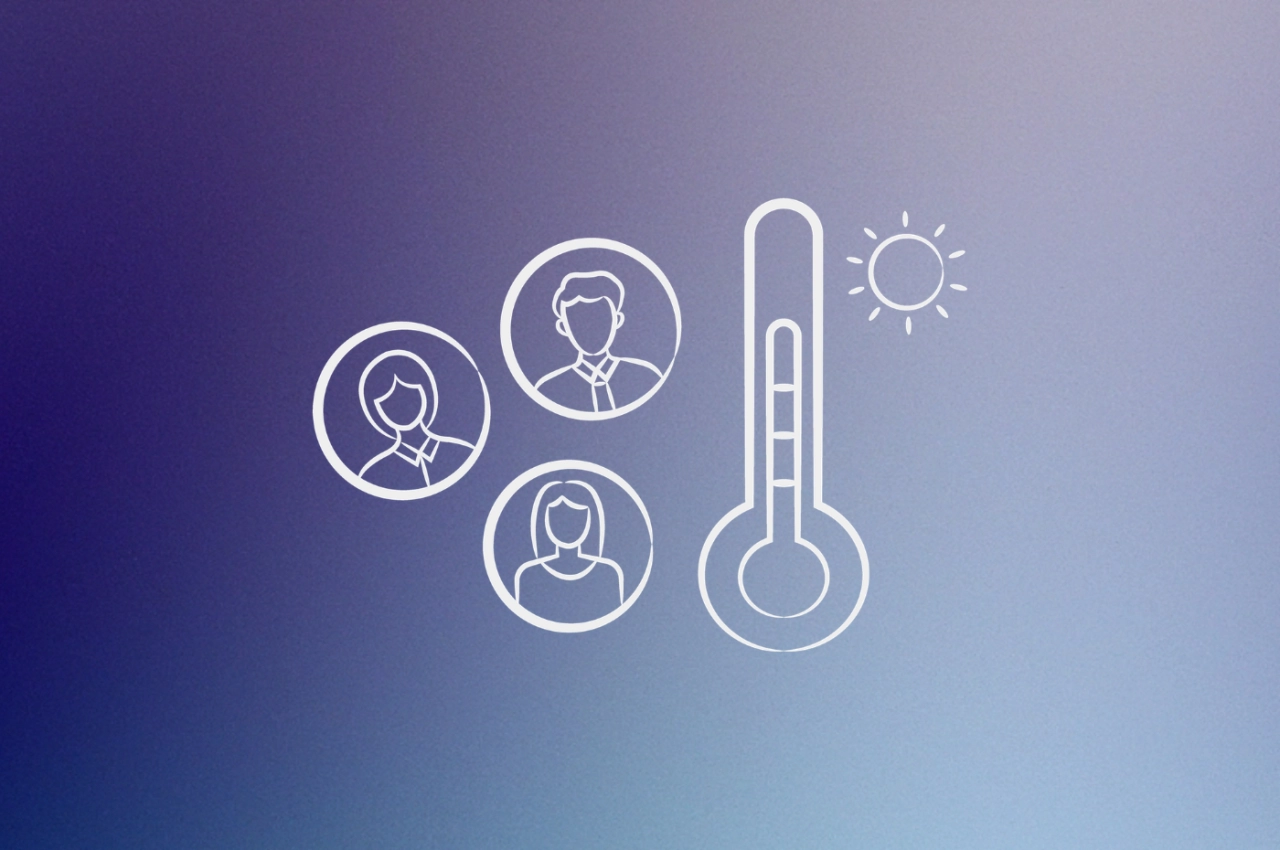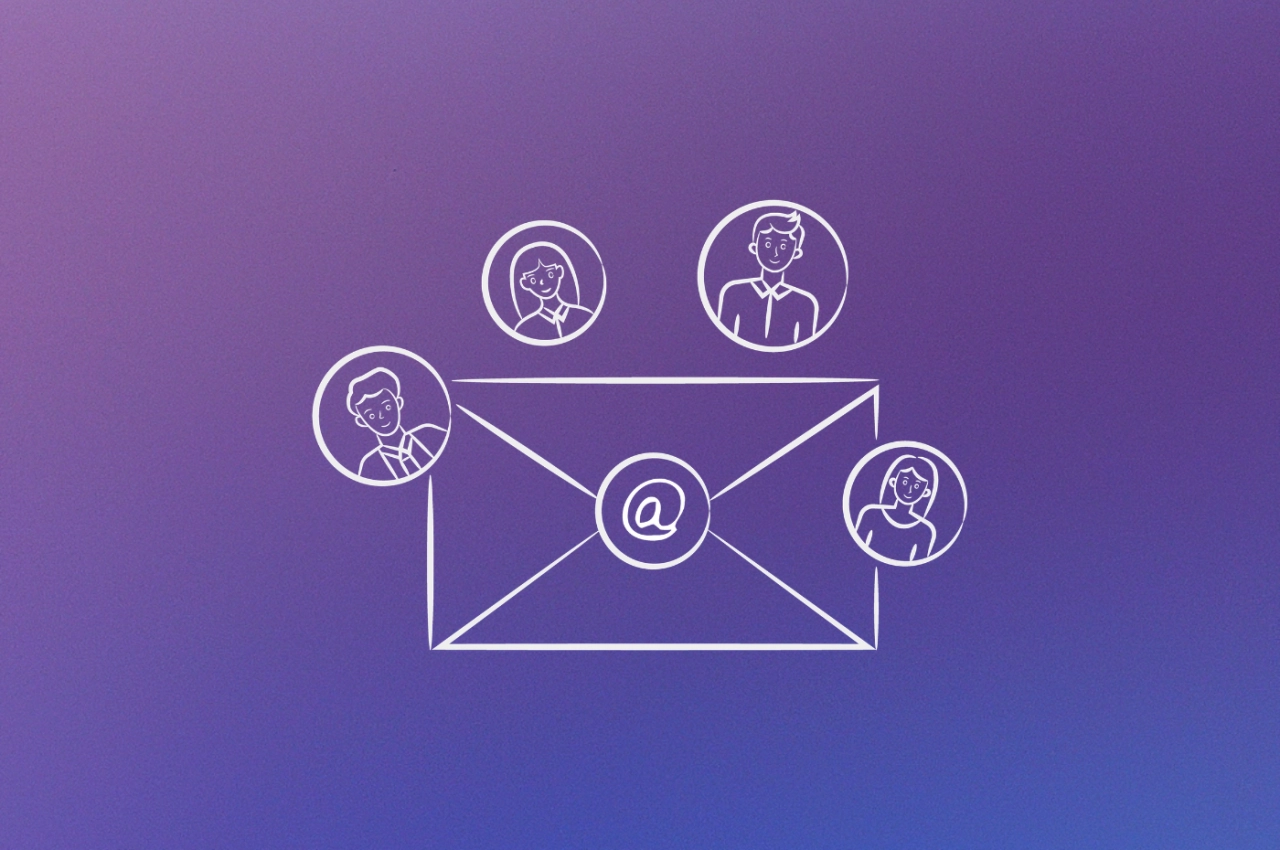- Outbound lead generation, which involves acquiring leads by reaching out to them directly through methods like cold calling, email marketing or direct mail, is an effective strategy for businesses looking to expand their reach.
- Popular and effective outbound lead generation strategies for 2024 include using automation tools for CRM, email and social media, personalizing outreach efforts, focusing on high-quality data and utilizing platforms such as LinkedIn’s Sales Navigator.
- While using lead generation services can save time and resources by outsourcing lead generation tasks, businesses need to consider potential downsides including cost, a potential lack of understanding of the product or service, and the risk of damaging the brand’s reputation.
Qualified lead generation tends to revolve around inbound practices in most public forum conversations on the topic. Yet, B2B lead generation is just as alive and well—and offers a unique set of advantages for businesses looking to expand their reach and attract new customers.
How come it still works, and what are some of the most effective outbound techniques you can implement in your strategy? Keep reading and find out more.
What is outbound lead generation?
Outbound lead generation is the practice of acquiring cold leads by reaching out to them directly. This can be done through various methods. Some of the most popular outbound lead generation tactics include cold calling, email marketing, or direct mail.
Outbound lead generation campaigns are frequently compared to inbound marketing as opposing or complementary facets of the same activity: generating leads, getting potential customers into a funnel, and helping the sales process.
Best outbound lead strategies
There are many B2B outbound lead generation marketing strategies, but some of the most popular ones include the following.
Cold email
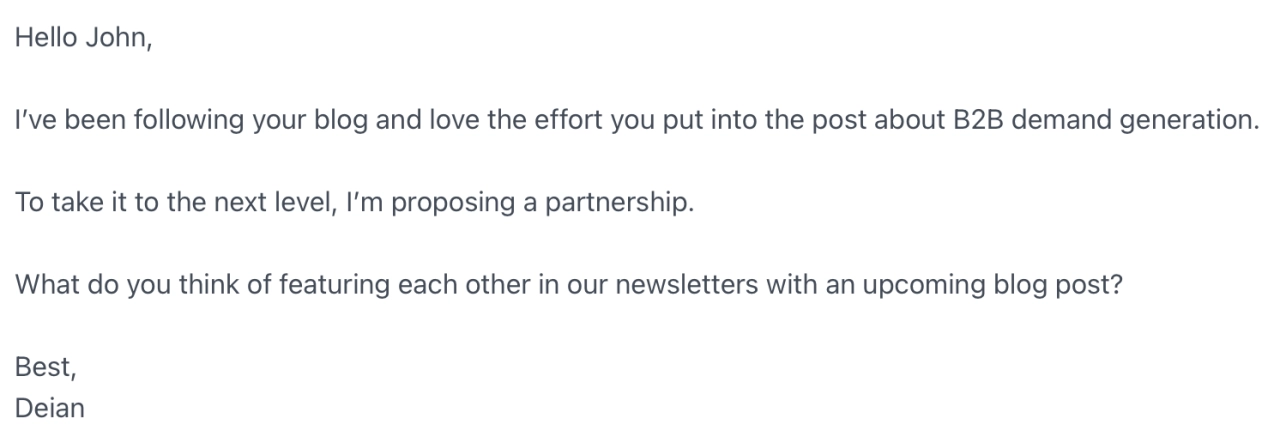
Cold emails are emails you send to people you have never interacted with. It involves reaching out to potential customers through email and introducing your product or service. The key to a successful cold email campaign is personalization and targeting the right audience.
Cold calling
Cold calling is contacting potential customers by phone. It allows for direct communication, but only if you’re actually reaching decision-makers. Most cold calling lists are filled with company switchboards and outdated numbers. Invest in verified phone number lists that include direct dials—you'll spend less time getting transferred and more time having actual conversations.
Direct mail
Direct mail involves sending physical marketing materials, such as postcards or brochures, directly to potential customers. Although regarded as old-school, direct mail is still a viable option, particularly if your audience doesn’t spend that much time online. Stats don’t lie: direct mail tends to have a 95% engagement rate (while nearly 60% of a digital newsletter subscribers unsubscribe from email lists).
Outbound lead generation process explained
Effective outbound lead generation requires a structured approach that combines research, strategy, and execution.
Here’s a step-by-step guide:
Research: Create ideal customer profiles (ICPs) using data analytics and market intelligence. Know exactly who you’re going after before you start reaching out.
Prospect identification: Select target companies based on ICP characteristics and buyer personas. Use data enrichment tools to fill in missing firmographic data, contact details, and tech stack info—you’ll waste less time on dead ends.
Lead validation: Verify prospect interest through email or phone outreach. Not everyone who fits your ICP is actually ready to talk.
Initial outreach: Craft personalized pitches to engage prospects and build rapport. Generic templates get ignored, so reference something specific about their business.
Nurturing campaigns: Develop targeted content and messaging to educate and convert leads. Most prospects need multiple touchpoints before they're ready to buy.
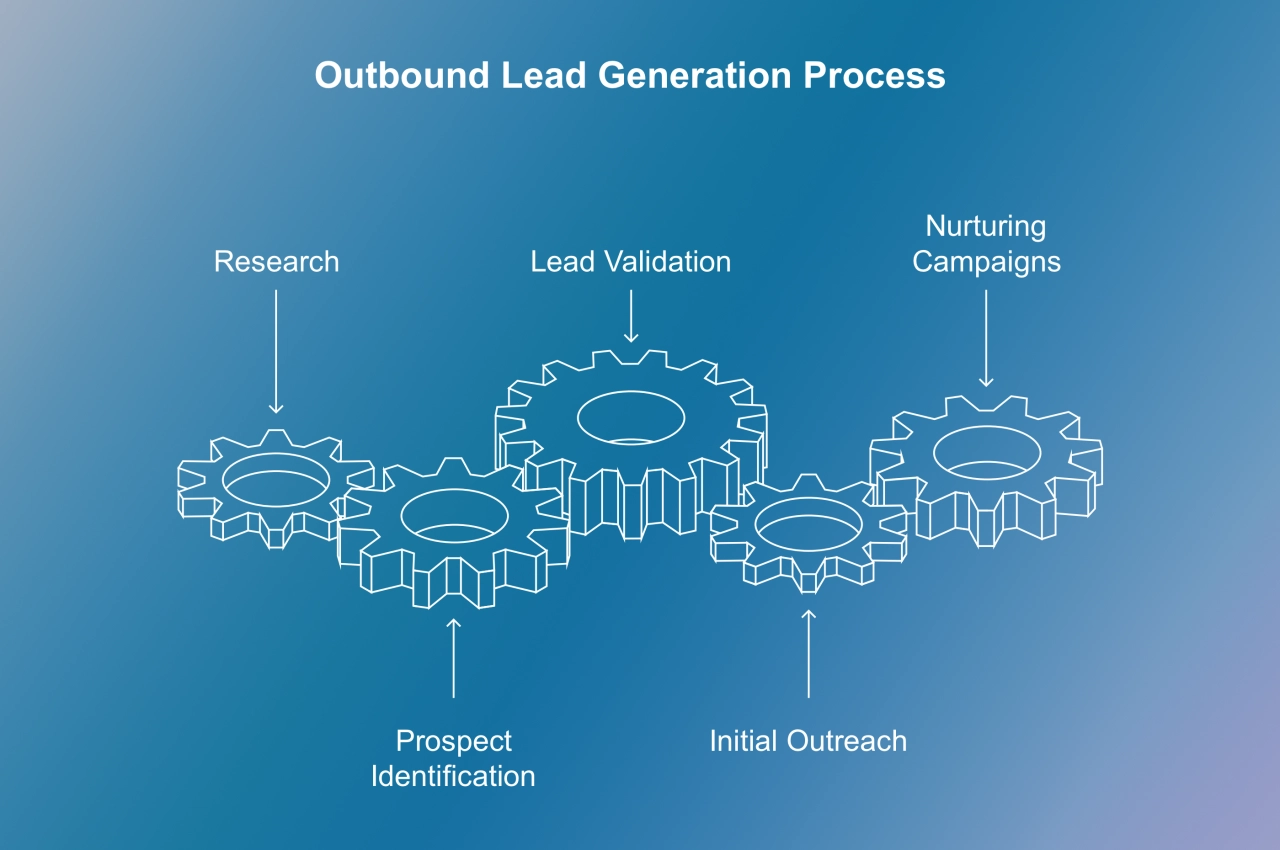
Developing precise ICPs and buyer personas helps customize your strategy to meet each prospect’s needs, thereby enhancing conversion chances. Data-driven methods allow for optimization using metrics such as:
conversion rates
lead quality
sales cycle length
By leveraging these strategies, your outbound lead generation team can achieve higher success rates and drive meaningful business growth.
Automating outbound lead generation
Now that you’re aware of the general process, it’s time to reduce manual work. Automated lead generation can turn your marketing and sales team into a well-oiled revenue-driving machine. Here’s what you need to get started.
CRM tools
Use customer relationship management (CRM) tools to manage your cold leads and automate communication with them. This helps you collect customer data, manage it securely, and use it to personalize your outreach. Some of the best CRM tools are MailChimp, Salesforce, and ActiveCampaign.
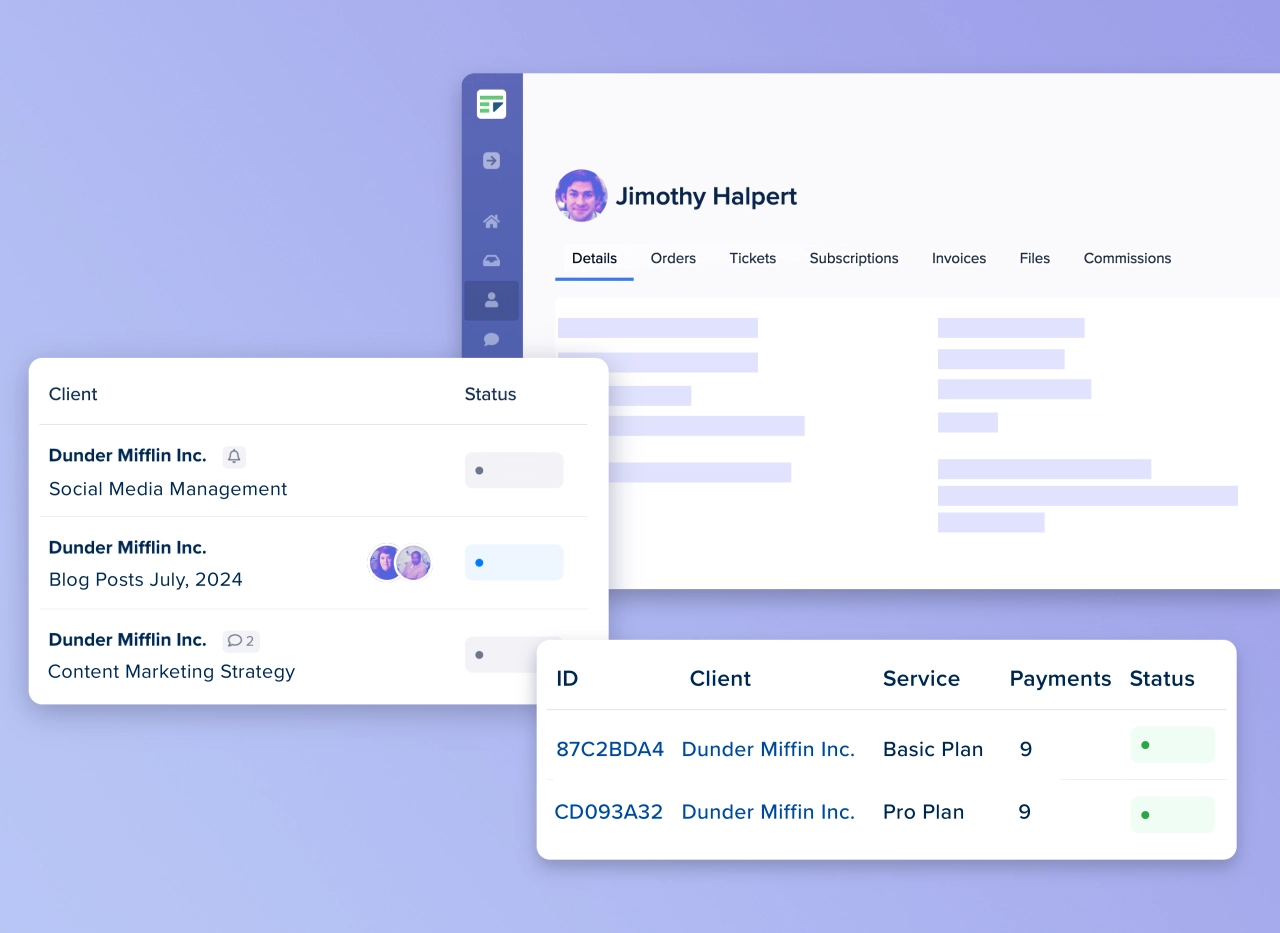
Keep all your client data securely stored in one place.
When looking for a CRM tool, be sure to consider the following criteria:
ease of use
integration with other tools
customization options
reporting and analytics capabilities
Social media automation
Similar to email automation, social media automation involves using tools to schedule and publish posts on various social media platforms. This not only saves time but also ensures consistency in your messaging.
If you’re doing research to find the right social media scheduling and automation tool, look for the following features:
integration options with your CRM and other marketing tools (white label form builder, project management tool, client portal)
analytics capabilities (make sure you can check your social media data through the tool or integrate it with Google Analytics)
content scheduling options
chatbots
Use chatbots on your website to automate conversations with visitors and collect their contact information or guide them towards making a purchase. This is a low-hanging fruit that can significantly reduce your sales team’s workload. Some popular chatbot tools include Intercom, Drift, and Zendesk.
If you’re in the market for a chatbot, be sure to look for the following features:
customization options (chatbots should reflect your brand and tone)
AI capabilities (to improve conversation flow and personalize responses)
integration with CRM and other marketing tools
Email automation
Email automation allows you to schedule and send automated emails based on customer behavior or triggers set by your team. Considering email ROI is $36 for every $1 spent and that this is one of the highest returns on investment in marketing, investing in a quality email tool is more than worth it.
Depending on what your business sells and what you’re looking for, there are a lot of email tool options for you. Some of the most popular names include Mailchimp, AWeber, Drip, Klaviyo, and ConvertKit.

Here are some criteria to consider when searching for email automation software:
ease of use (look for a drag and drop email builder)
segmentation capabilities
personalization options
A/B testing features
The role of outbound sales & marketing
Having the right tools and strategies at hand is not the only thing you need to keep in mind. Outbound sales and marketing teams play a vital role in driving revenue growth. These two departments often work together to deliver effective campaigns that target specific customer segments.
Let’s look at the roles and responsibilities of both teams:
Sales team: Responsible for cold calling, email outreach, and lead qualification.
Identify potential customers through data analysis and research.
Develop personalized pitches and presentations to engage prospects.
Convert leads into paying customers.
Marketing team: Focuses on creating engaging content, social media campaigns, and promotional materials.
Develop targeted marketing strategies and messaging.
Create lead generation assets (e.g., email templates, landing pages).
Collaborate with sales teams to ensure alignment.

For successful achievement of shared goals, outbound sales and marketing teams need to collaborate seamlessly. This collaboration allows for the development of cohesive campaigns that utilize the expertise of both departments.
To make sure both teams perform well, track these key performance indicators (KPIS):
sales-qualified leads per week
conversion rates from demos/pitches
average deal size
customer acquisition costs
Top 3 outbound lead generation examples to inspire you
Many have claimed the death of outbound lead generation. Not only is it not dead yet, but it continues to be a profitable lead generation method. Here are three examples of companies doing outbound lead generation effectively.
Use LinkedIn’s Sales Navigator
LinkedIn Sales Navigator allows you to target prospects and send personalized messages directly. It isn’t cheap, but it’s a tool that gets results for companies of all sizes.
To use the Sales Navigator at its peak, keep the following tips in mind:
set your specific search criteria (job title, industry, location, etc.)
customize connection requests
use InMail messages wisely
Network with peers
Networking events are a great opportunity to connect with like-minded people. This allows you to build relationships that will come in handy when you need to make a sales pitch or ask for a referral. Conferences and workshops, especially in your industry, are great places to start.
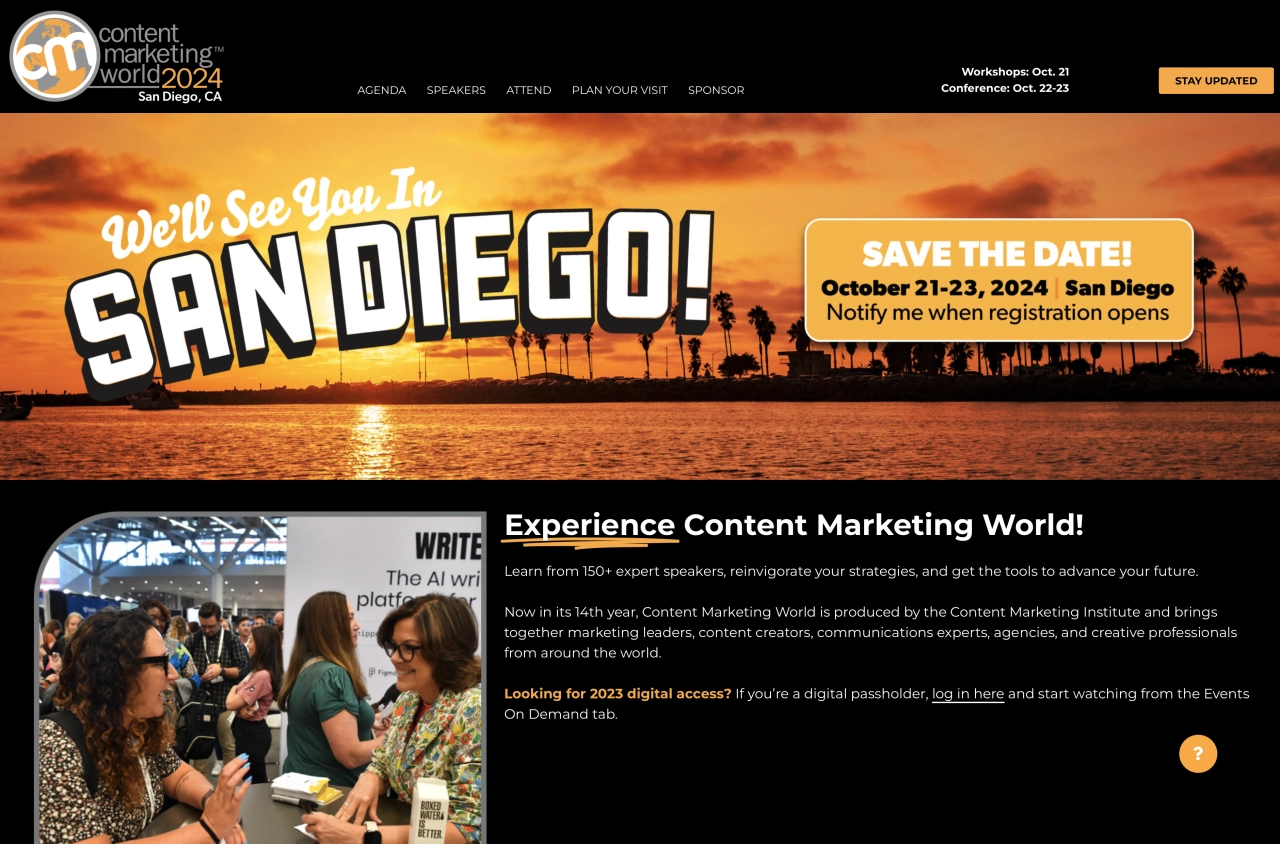
There are many different events to choose from, but those you do attend should be worth your time. After all, you’re looking to connect with people that you can form a partnership with, learn from, or where you can meet potential clients.
Use direct mail creatively
As mentioned earlier, direct mail is still an effective lead generation channel. To stand out from the competition and make an impact on potential customers, get creative with your direct mail campaigns.
Believe it or not, direct email is not for the older generation. It can be effective for all age groups, particularly if you want to stand out.
Here are some of the marketing techniques you can use with direct email:
create eye-catching and personalized designs (use AI graphic design tools for this purpose)
send small, thoughtful gifts or samples with your mail
include a call-to-action that encourages recipients to take action right away
Should you make use of lead generation services?
Lead generation services allow you to outsource lead finding and qualification (usually done through a third party). This can save you time and resources, but it’s important to carefully consider if it’s the right move for your business. Here are some pros and cons to keep in mind:
Pros:
can save time by outsourcing lead generation tasks
companies specializing in lead generation may have more experienced processes in place
allows you to focus on other aspects of your business
Cons:
can be costly, especially for smaller businesses
may not have the same level of understanding for your product/service
some companies may use questionable tactics that could damage your brand’s reputation

Outbound lead generation FAQ
How many more leads are generated by inbound than outbound?
There is no clear research on how many more leads outbound generates, as compared to inbound marketing. It ultimately depends on the effectiveness of your strategies and your target audience. However, both outbound and inbound lead generation have their advantages and can be used together to create a well-rounded demand generation approach.
Are outbound leads more expensive than inbound?
It’s difficult to determine if one type of lead is more expensive than the other. Costs vary depending on the specific outbound lead generation strategies and tools used.
How to improve lead generation on outbound marketing?
If you want to generate (more) leads with outbound marketing, make sure you personalize your messaging, use multiple channels for a well-rounded approach, and continually test and analyze your strategies for improvement. Also, consider incorporating inbound tactics into your outbound efforts, such as creating valuable content and using social media to engage with potential leads.
Is email marketing outbound lead generation?
Some forms of email marketing are outbound lead generation (e.g., cold emails). In general, most types of email marketing are considered inbound lead generation (where people give you permission to email them).
Successful outbound lead generation is possible
Outbound lead generation is as relevant and effective as ever. Done right, it can be a powerful sales and marketing tool for reaching new customers and growing your business. Plus, combined with lead nurturing, your outbound lead generation process can be a healthy, smart lead gen strategy. The right tools, good copywriting for lead generation purposes, and a strategic approach can all help make your outbound lead generation efforts successful.
Whether you choose to use outbound lead gen tactics on their own or incorporate them into your overall marketing strategy, remember that personalization, consistency, and ongoing optimization are key to generating quality leads through outbound methods.

